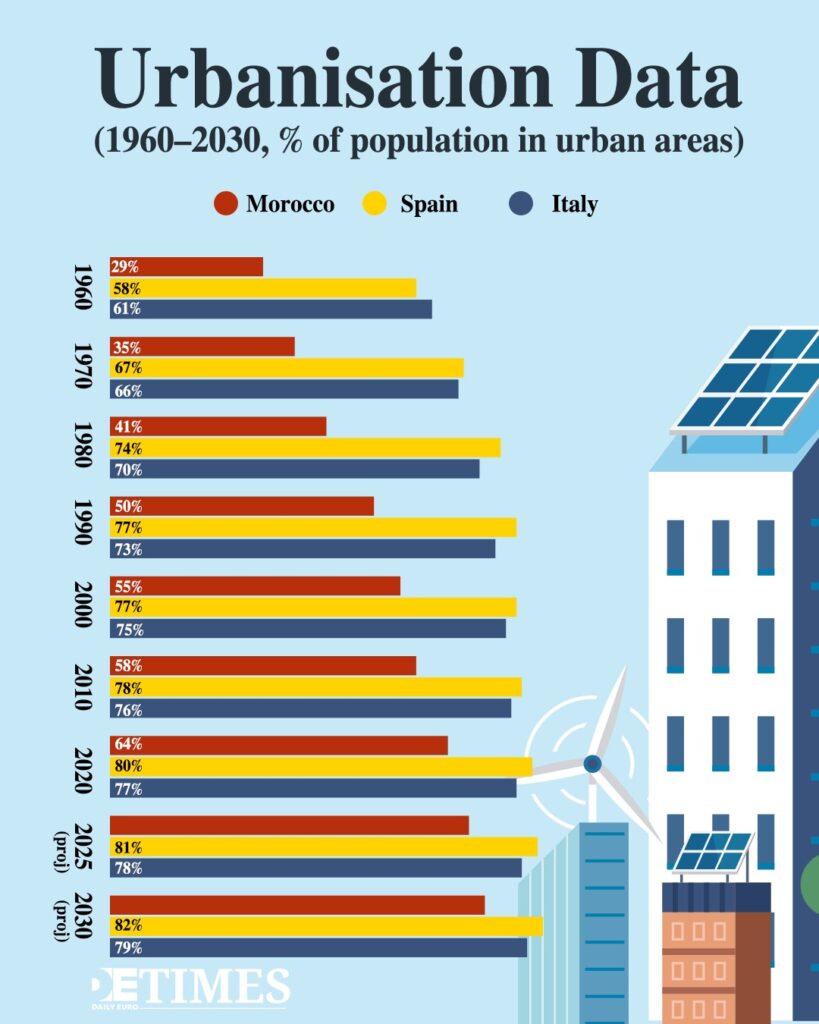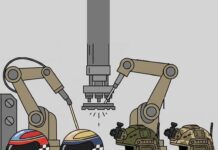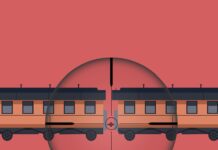African urbanisation is growing rapidly: according to data, the urbanisation rate in Morocco increased from 29% in 1960 to more than 60% by 2014, and is projected to exceed 70% by 2030.
Casablanca, Morocco’s largest city, is an interesting “laboratory” of urban solutions, combining modernist ideas with contemporary strategies.
Infrastructure and Transport
Casablanca is actively implementing public transport as a way to transform the urban periphery.
Urban megaprojects and their impact on the city structure are described in the context of studies on globalisation and gentrification. In particular, the modern tram project includes four lines with 110 stations and a route length of 74 km. Its daily passenger flow is 220,000 people.
Madrid is conducting an experimental large-scale stimulation of growth around the M-30 axis, where the large projects “Cuatro Torres” and “Madrid Nuevo Norte” are being implemented. However, the transport infrastructure (BRT, tram) in these areas is developing more slowly than in Casablanca.
Milan is implementing large-scale development projects such as CityLife, the transformation of the former Fiera Milano exhibition area into a residential, commercial, and recreational cluster on 36.6 hectares, with large green areas (>50%), underground transport infrastructure and pedestrian and bicycle routes.
Casablanca has much to teach us: tram accessibility, integration of residential areas with transport, and the strengthening of public transport.

Urban Planning and Flexibility of Development
Casablanca is an example of urban modernism done right.
The Carrières Centrales district, a project of the 1950s (architects Candilis, Woods, Josic), was created according to the grid structure of the Ecochard for working-class neighborhoods and today remains flexible in changes; residents actively adapt the facades and loggias.
A modern approach considers these neighborhoods as “configurable”, where it is important to preserve street solutions, while integrating local traditions and density. Milan is developing large areas such as Scalo Romana, where a former railway zone is transformed into a dense integrated urban cluster with housing, culture and parks. CityLife also preserves natural elements: trees are moved, ecological observatories are created.
However, the flexibility of development and the possibility of adaptation, like in Casablanca, is something that European cities are still lacking.
Urbanisation and Social Connections
Casablanca has gone from sporadic expansion to complex urbanisation, which has led to a transformation of relationships between citizens, the creation of new social forms, but also to the growth of remote developments, the isolation of old communities, the emergence of “closed enclaves”.
An important lesson: preserve the social fabric when the city changes.
In Europe, the trend towards ‘ghettoisation‘ is also clear. Both Madrid and Milan are trying to preserve public spaces, but the experience of the North African city contains a warning: do not rely only on infrastructure, it is important to restore street life and social connections.
Megaproject Management and Social Justice
In Casablanca, large-scale projects are born in the context of neoliberal urbanism: the authorities strive to make the city “global” by investing in business districts, which often leads to the displacement of vulnerable groups of the population to the periphery.
Madrid, where the Cuatro Torres and Madrid Nuevo Norte projects emerged thanks to alliances between the authorities and business, is already facing protests from residents defending social interests. Milan also has large development projects, but does not always take into account social justice and the right to housing. Casablanca is a lesson in the need for a balanced approach to development: megaprojects must be accompanied by social policy rather than displacement.
Ecology and Sustainability
Casablanca is increasingly positioning itself as a “green metropolis” by implementing sustainable solutions. The city is expanding green spaces, such as the Arab League Park, and developing new eco-parks to offset rapid development. Solar panels are widely installed in public buildings to reduce dependence on fossil fuels and wastewater treatment plants recycle millions of cubic meters of wastewater each year for irrigation.
Madrid and Milan can learn from this experience by developing green corridors, introducing renewable energy in residential areas, and adapting water-saving technologies to the Mediterranean climate, where droughts and extreme heat waves are increasingly common.
Casablanca is not just an example of rapid growth. It is a city where modernism, architecture, connectivity, and experimental resettlement mechanisms form a unique urban experience.
Read the Latest Articles on DET!
Relations in the Rear View For Now: The U.S.-India Diplomatic Crisis
A New Wave of Bioethics: The Frontiers of Genetic Engineering
Social Capital Lives On: The Story of Germany and Russia





